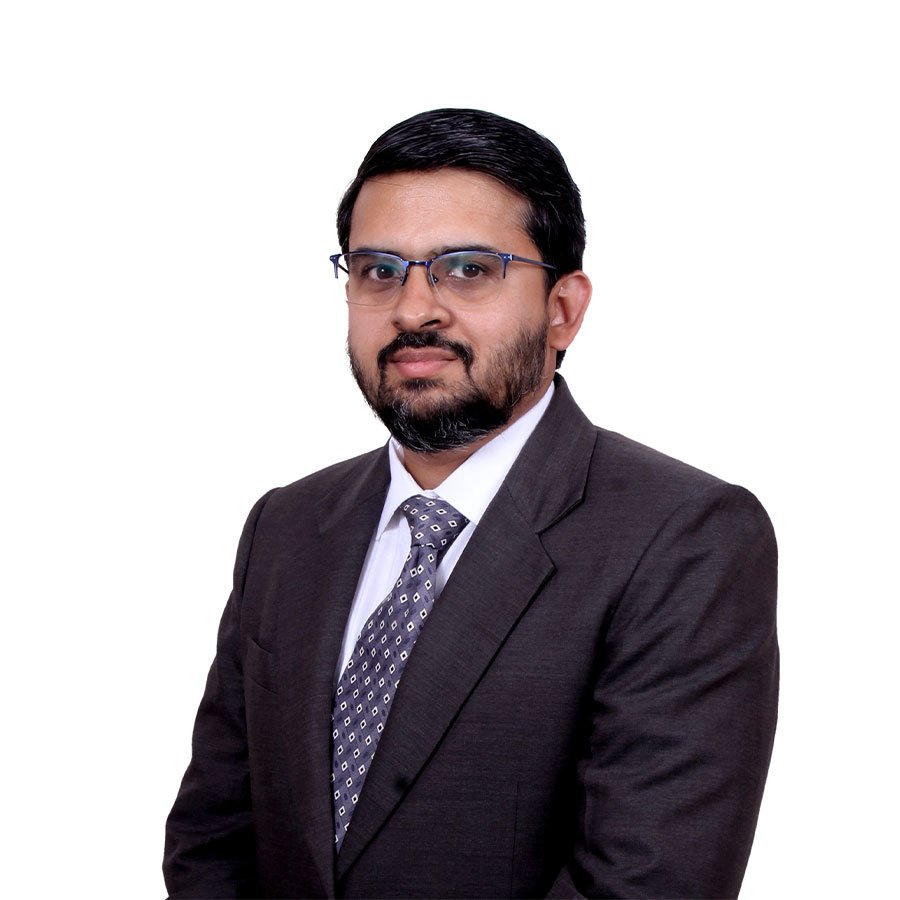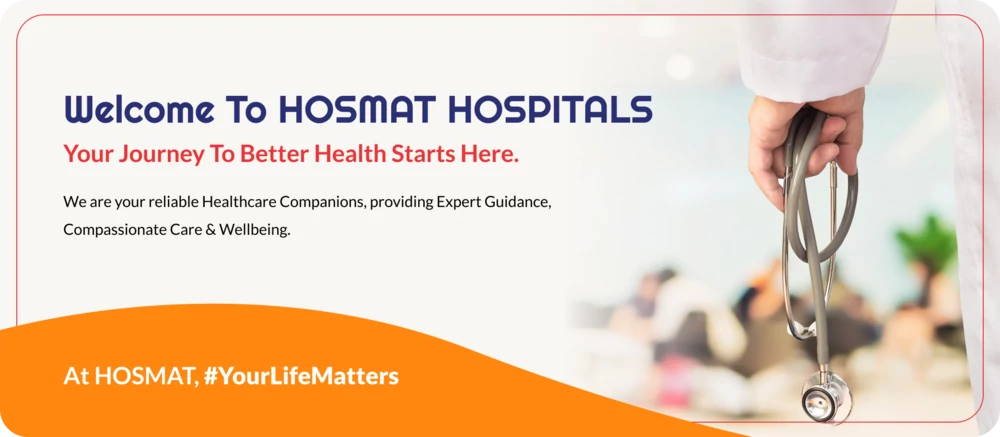Pediatric Orthopedic
Children can get a variety of specialized orthopedic treatments from the Pediatric Orthopedics department at HOSMAT Hospitals. Our group of pediatric orthopedic specialists is dedicated to providing your kid with the best standard of surgical and quality treatment. A group of committed nurses and rehabilitation professionals treat children with musculoskeletal diseases holistically, staying on the cutting edge of orthopedic science and technology.
Clubfoot Deformities
The most prevalent congenital foot deformity in which the foot is twisted inward and downward is clubfoot, also known as Congenital Talipes EquinoVarus. It is more prevalent in men and can affect either or both feet (in 50% of cases). It may exist alone (as in idiopathic clubfoot) or in conjunction with other musculoskeletal abnormalities, such as congenital muscular torticollis (CMT), hip dysplasia, metatarsus adductus, and developmental dysplasia of the hip. In comparison to idiopathic clubfeet, syndromic clubfoot are stiffer and more difficult to treat.
Bowing And Knocking
Toddlers who have developmental problems frequently bow their legs and smack their knees. Teenagers can also notice them. In a bow, the feet are apart and the knees are apart, whereas in a knock, the feet are apart and the knees are touching. These are modifications to the body’s typical biomechanics. Due to the position of the baby in the womb, all newborn babies bend somewhat when they are born. Children typically outgrow this before they become two years old, and it gradually gets less severe. However, in some circumstances, this bowing continues or even worsens, necessitating additional testing, such as X-rays of both lower limbs to check for alignment and mechanical axis, X-rays of both wrists to check for rachitic changes, and blood tests to check for levels of calcium, phosphorous, vitamin D, and alkaline phosphatase. These tests can assist in distinguishing between normal bowing, Blount’s disease (a condition that affects the proximal tibial growth plate and causes knee bowing), and Rickets. Knocking of the knees begins to occur at a maximum age of 6 years after attaining neutral alignment and then reduces until age 8 to reach the adult pattern of 5 to 7 degrees of valgus alignment. Investigations should be conducted if knee knocking develops later in childhood, including blood tests for rickets or osteomalacia. Inquiries concerning the child’s diet, growth and development, bowel habits, and any skeletal dysplasias in the family are part of the history and clinical examination. A comprehensive physical examination by the doctor will be followed by a thorough assessment of the musculoskeletal system, which will cover the hips, knees, and ankles as well as any discrepancies in limb length, ligament laxity, torsional alignment, the child’s walking gait, etc.
Cerebral Palsy
A category of illnesses known as cerebral palsy are characterised by non-progressive hypoxic brain injury (static encephalopathy), which leads to progressive musculoskeletal contractures. The degree of the injury can be used to grade the child’s functional state and level of disability. It is usually linked to foetal respiratory distress, which causes oxygen deprivation and harm to the area of the brain in charge of the body’s musculoskeletal system. The risk factors include a history of infections, IUGR, and NICU admission owing to respiratory distress. The child may show signs of developmental delay when it comes to skills like sitting with or without assistance, standing and walking with or without support, etc. Seizures, problems with vision or hearing, biarticular muscular contractures, and other symptoms are also possible. On examination, the majority of patients have elevated muscular tone, either alone or in combination with other aberrant movements such dystonia (variable tone), chorea, athetosis, etc. These kids typically struggle with simple tasks due to weak selective motor control. Due to the involvement of biarticular muscles in the lower limbs, these kids walk with an aberrant gait. These children usually exhibit aberrant gait patterns such as jump knee, equinus, crouching, and tight knees. To identify the faulty muscles, perform a visual and three-dimensional gait study. Additional research includes using an MRA to scan the brain for anomalies and an EEG to look for epileptiform patterns.
Brachial Plexus Birth Palsy
Breast Plexus Birth palsy is a nerve injury caused by stretching or avulsion to the brachial plexus, a bundle of nerves that emerge from the spinal cord, travel through the neck, and supply the arm. Erb’s palsy is another name for it because it primarily affects the upper trunks. The prognosis is based on how much the nerves have been stretched. Most of the time, it is neuraxial, and all movements return within 6 to 8 weeks. However, recovery from axonotmesis may take six months to a year in some situations. The most serious damage that requires neural reconstruction is root avulsion. Surgery to rebalance the muscles may be beneficial for patients who present late with persistent BPBP. Children with BPBP require ongoing clinical evaluations to monitor nerve healing. For the purpose of comparison and future reference, this is plotted as scores on the proforma.
Developmental Dysplasia Of Hips
Hip developmental dysplasia is a condition in which the ball and socket joint is dysplastic or aberrant in some way. The component of the hip joint that is typically not deep or curved enough to maintain the ball (the head of the femur/thigh bone) concentrically reduced is the socket, or acetabulum. The ball may be partially or wholly out of the socket, depending on the severity. While the hip joint is reduced in other cases, it is unstable and susceptible to dislocation during clinical procedures. It occurs in 1 to 3 out of every 1000 live births. At birth or in the first year of life, it may be present. It may exist alone or in conjunction with other musculoskeletal conditions. It typically occurs more frequently in females, with firstborns, in breech presentations (when the bottom of the baby is delivered first instead of the head), and in pregnancies with oligohydramnios. To rule out DDH, every child should have a comprehensive physical examination by a doctor. If there is any uncertainty, the child should be promptly referred to a paediatric orthopaedic surgeon. Sometimes it can be challenging to identify DDH early because there aren’t any visible symptoms. However, a diagnosis can be determined by performing a thorough clinical examination on both lower limbs. In addition to an examination, various procedures can be used to confirm the diagnosis of DDH, such as USG and hip X-rays.
Growth Plate Injuries
Children’s growing bones have growth plates, which are cartilaginous structures at the ends of the bones. On x-rays, it shows as a black line that vanishes near the conclusion of bony growth (usually around 16 in boys and 14 in girls). Because the physeum is weaker than the rest of the bone, it is more likely to fracture in youngsters (around 30% of all fractures in children). Physeal fractures heal quickly because of the speedy development. The distal femur (thigh bone), proximal tibia (leg bone), ankle fractures, distal radius (near wrist), etc. are among the common fractures. Stress fractures are very uncommonly observed in overuse injuries. Consult a paediatric orthopedician, who is better prepared and educated about these types of fractures, as physeal fractures are typically connected with growth difficulties if not adequately addressed. Pain, edoema, deformity, and the inability to move the damaged bone are the typical symptoms. There may be bleeding and protrusion of bone or muscular tissue from the site of an open wound. Depending on the location of the injury, additional investigations can include a Mri, CT scan, or X-ray. Surgeons classify the physeal damage and determine the best course of action based on the results of these tests. The course of treatment might range from straightforward immobilisation with a plaster or brace to surgical correction and stabilisation of the malformed bone with an implant that respects the physis, or even close reduction. Physeal bar resection, deformity correction, and limb lengthening can be performed in late instances who present with physeal bar formation, limb deformities, and discrepancies.
Musculoskeletal Infections
At any age, musculoskeletal infections can happen. Due to India’s high risk of septicemia, bone and joint infections are highly common in infants. It may manifest as discomfort, edoema, fever, and the inability to move or bear weight on the affected area. Little ones will stop eating and become cranky. There might have been a viral infection in the recent past. X-rays of the afflicted bone and joint, USG, MRI, and blood parameters such CBC, ESR, and CRP are all included in the investigations. Depending upon the investigations, treatment can vary from simple analgesics and anti inflammatories (in case of transient synovitis), antibiotics (early infections) and drainage and arthrotomies (in case of osteomyelitis and septic arthritis). Sometimes the child may need repeated surgeries to get rid of the infection completely. Outcomes of bone and joint infections are good if managed properly at the right time.

